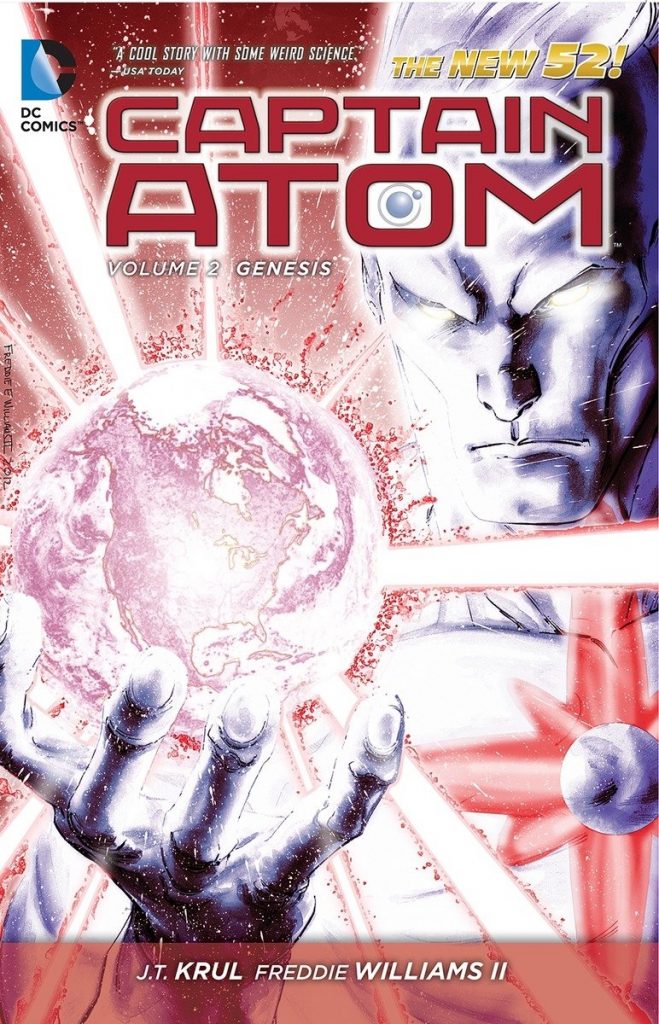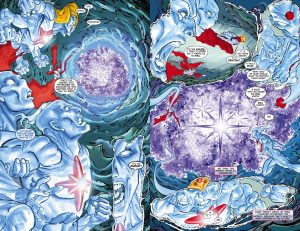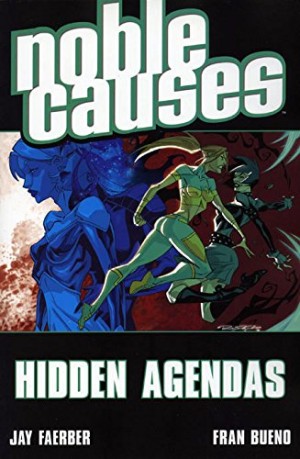Review by Ian Keogh
Fittingly for a graphic novel titled Genesis, the opening chapter runs through the highlights of Captain Atom’s life before his transformation from plain Nathaniel Adam, and how that transformation occurred. Having dealt with that, much of what follows deals with what Captain Atom could become, which involves exploring the nature of reality itself, the permanence of time and the structure of the universe. With all that served on the plate, J. T. Krul’s ambition can’t be faulted, but he’s not capable of binding it into anything very entertaining.
It might be among the more traditional ways to go with superheroes, but the best idea turns out to be what Captain Atom can do when healing others, introduced and thrown away. It’s one of several moments that revisits parts of Evolution, which is another clever idea, but it’s still hinged on the same whiny Captain Atom whose lack of understanding about what he can do still causes pain for everyone around him.
As seen by the sample art, Freddie Williams II is still called on to illustrate the cosmic and the ethereal, blending Captain Atom with the universe. In some ways it’s what Jim Starlin was aiming at in the 1970s, but the Williams version of reality bleeding around the edges is chaos rather than order. His best moment is midway through when he has to draw multiple small panels of Captain Atom streaking across the sky of various cities. There’s nowhere near the space to define an entire city, so Williams does it via notable landmarks. Otherwise his civilian scenes are far looser this time around.
Fittingly, given the concepts introduced, it’s the past under the microscope again in the final chapter, this time a blow by blow account of the scientific process that created Captain Atom. Was it really necessary?
Too much of both Krul’s Captain Atom graphic novels goes over the same ground and the same emotional responses, and while it’s a complete story over thirteen chapters, it never captivates.





